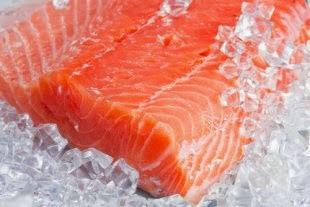| Online: | |
| Visits: | |
| Stories: |
5 Ways to Avoid Seafood’s Dirty Secrets
by Clarissa A. León
AlterNet
It's time to eat fish in a sustainable way if we hope to continue eating fish in the future.
A recent op-ed in the New York Times by Jane Brody says it's time for us to “relearn” the way we eat seafood. America's fish consumption habits are simply not sustainable. Along with ensuring your fish is fresh, Brody cautions it’s more important than ever to eat fish that is sustainable and sourced from a fish farm. Here are five essential practices to follow.
1. Watch Your Shrimp: Half of imported shrimp comes from Asia. Not only does Brody warn of “bacterial and viral infections” swarming Asian shrimp farms, but a recent investigation by the Guardian revealed a long history of participation in slave labor in Thailand’s shrimp processing chain. Charoen Pokphand (CP) Foods was found to purchase fish meal from fish boats manned with slave labor.
Thai authorities told the Guardian they condemned human trafficking; meanwhile, some of the largest supermarkets like Walmart, Carrefour, Costco and Tesco are investigating the suppliers. In addition to these problems, when a shrimp farming site becomes unusable, Brody writes that “shrimp farmers simply move on, destroying more miles of mangrove along the shore and wrecking habitats for all manner of wildlife, including spawning fish.”
2. Wild Fish Won’t Meet Demand: Paul Greenberg, author of American Catch: The Fight for Our Local Seafood tells Brody that beginning the process of eating our seafood from a sustainable, environmentally friendly fish farm would help fulfill the world’s need for fish. Already, nearly 86 percent of seafood consumed in the United States is imported. But consumers who turn to salmon for their omega-3 vitamins will not be so fortunate without farmed fish — nearly 170 billion pounds of wild fish are taken from our oceans, rivers and lakes. Greenberg notes that if everyone ate two servings of fish a week, another “60 billion pounds would be needed to meet the demand.”
Read more »
Source: http://www.riseearth.com/2014/08/5-ways-to-avoid-seafoods-dirty-secrets.html





